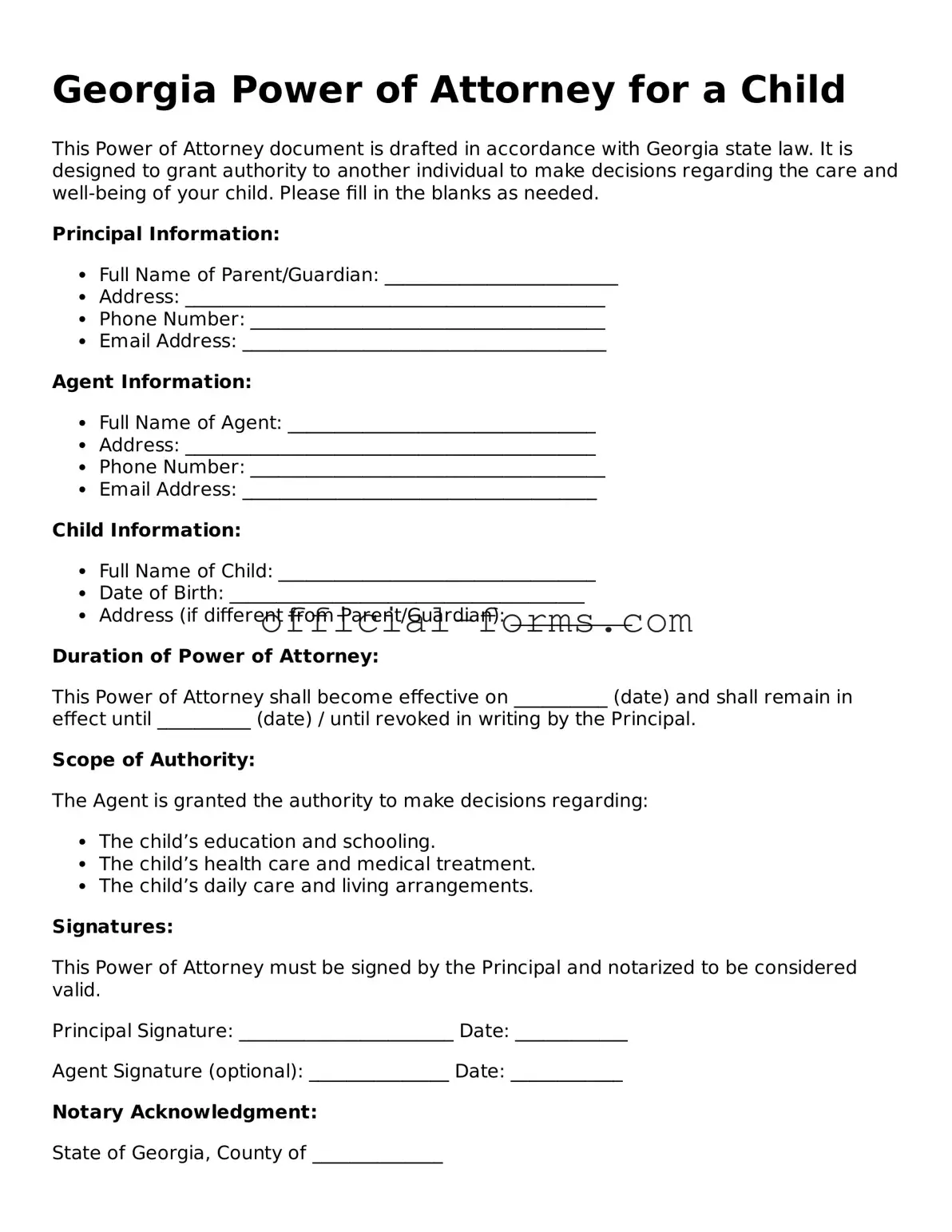In the state of Georgia, the Power of Attorney for a Child form serves as a vital legal instrument that allows a parent or legal guardian to delegate specific parental rights and responsibilities to another individual, often referred to as the agent or attorney-in-fact. This arrangement can be particularly useful in various situations, such as when a parent is temporarily unable to care for their child due to travel, illness, or other circumstances. The form outlines the extent of the authority granted, which may include decisions related to education, healthcare, and general welfare, thereby ensuring that the child’s needs are met even in the absence of the parent or guardian. Importantly, the form must be completed with careful attention to detail, as it requires signatures from both the parent and the designated agent, and it may also need to be notarized to ensure its validity. Additionally, while the Power of Attorney for a Child is a powerful tool, it is essential to understand that it does not terminate the parental rights of the original caregiver; rather, it temporarily empowers another individual to act on behalf of the child. By providing clarity and legal backing, this form can help facilitate smooth transitions in caregiving arrangements, ultimately prioritizing the child's best interests.
